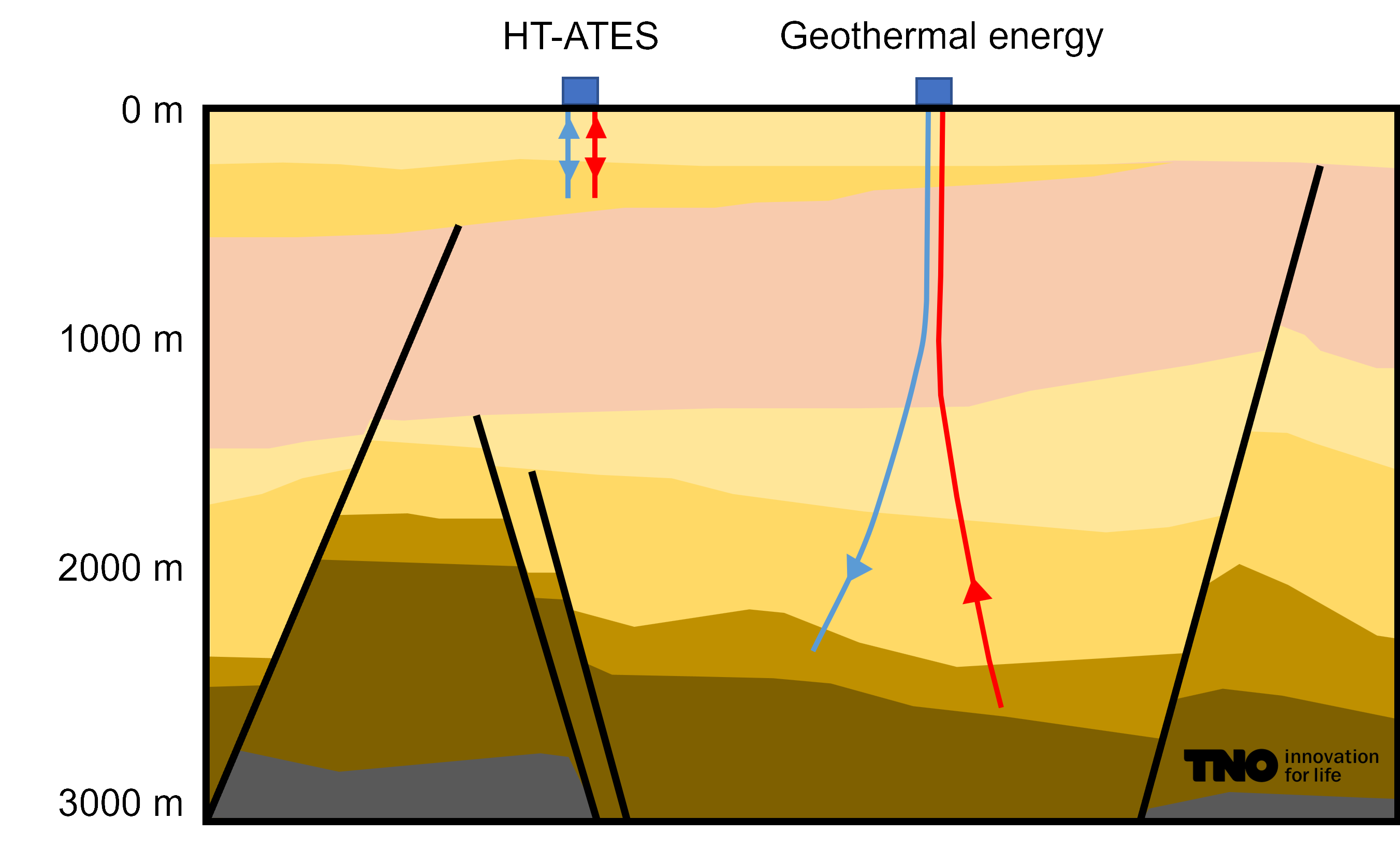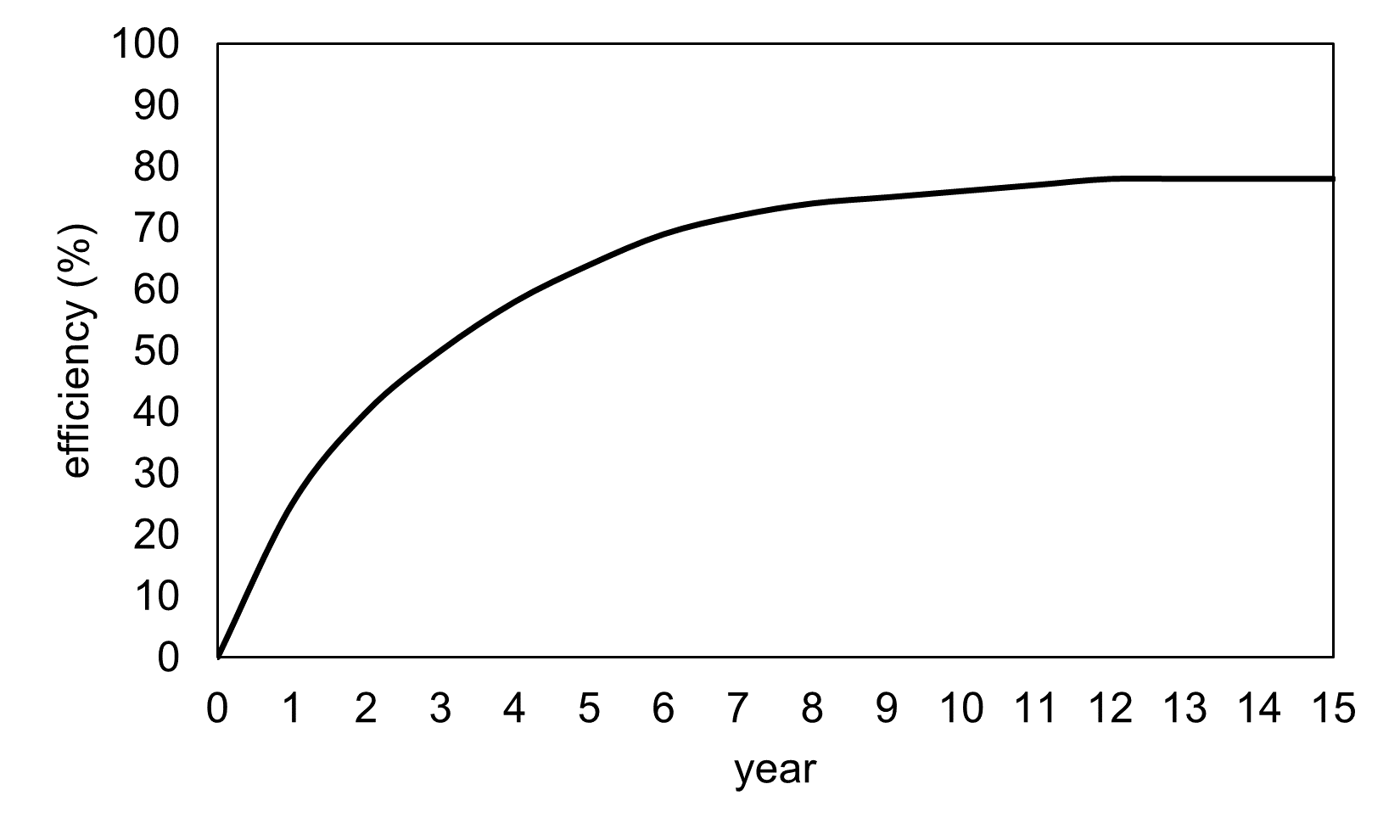High temperature storage is a variant of open geothermal energy systems in which (excess) heat is temporarily stored in aquifers in the subsurface. A HT-ATES system consists of one or more hot and lukewarm wells in an aquifer (a water-bearing layer in the subsurface).
The difference between HT-ATES and geothermal energy is as follows: geothermal energy uses the natural heat present in the subsurface. It extracts the heat from the earth itself. HT-ATES, on the other hand, acts as a heat buffer where external heat is stored in the subsurface. This external heat can come from geothermal energy, but also from other sources such as waste incineration, solar thermal, power-to-heat or gas.
The subsurface potential for HT-ATES is influenced by factors different from those for deep geothermal. Important factors are the presence of a sealing clay layer and the efficiency of heat recovery. In addition, HT-ATES is different from geothermal because the system alternates between injecting hot water in summer and producing heat in winter. Also, wells are used for both injection and production, which is not the case with geothermal. In some cases, even more than two wells can be used in a plant. The economic model for HT-ATES also differs from geothermal due to the use of different drilling techniques and materials.
In ThermoGIS-HT-ATES, the HT-ATES potential is calculated independently from the heat source. The costs calculated in ThermoGIS-HT-ATES are therefore the costs of heat storage only. It is assumed that the heat stored in the HT-ATES is free of charge.
Compared to geothermal, HT-ATES is currently applied shallower (~100-500 m) and both wells inject and produce heat (Figure 1). In summer, when renewable heat or waste heat is available, water is produced from the lukewarm well(s), warmed through a heat exchanger and injected into the hot well(s). In winter, when heat demand is high, the flow of the system is reversed. Hot water is produced from the hot wells, cooled down by a heat exchanger, and reinjected into the lukewarm wells.

Figure 1: Geothermal energy and HT-ATES wells in the subsurface.
The difference between the storage temperature and initial subsurface temperature in the subsurface can be large, especially during the first operational years. This causes relatively large heat losses to the subsurface and warming of the subsurface in the first years. To minimise heat losses and warming, the presence of a sealing (clay) layer above and below the storage aquifer is required. In the ThermoGIS-HT-ATES calculations, it is assumed that there is an ‘ideal’ sealing clay layer above the storage aquifer, although this does not have to be the case in reality. Therefore, a ‘clay layer’ map has been added to the map viewer so that the distribution of the first overlying clay layer (Asse clay in the case of the Brussels Sand Member) can be viewed. A local study is always required.
Initially, the thermal recovery efficiency of a HT-ATES is relatively low due to large heat losses, but increases in subsequent years (Figure 2). ThermoGIS-HT-ATES calculates thermal recovery efficiency for the first 15 years, as the efficiency is then reasonably stabilised. This is a safe estimate, in practice, the maximum efficiency may possibly be reached even sooner.

Figure 2: Thermal recovery efficiency of a HT-ATES. In the first years of operation the thermal recovery efficiency is typically relatively low. From ~5-10 years onwards, the efficiency is becoming more or less stable.
